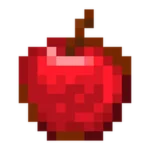The great white shark (Carcharodon carcharias), also known as the white shark, white pointer, or simply great white, is a species of large mackerel shark which can be found in the coastal surface waters of all the major oceans. It is the only known surviving species of its genus Carcharodon. The great white shark is notable for its size, with the largest preserved female specimen measuring 5.83 m (19.1 ft) in length and around 2,000 kg (4,410 lb) in weight at maturity.[3] However, most are smaller; males measure 3.4 to 4.0 m (11 to 13 ft), and females measure 4.6 to 4.9 m (15 to 16 ft) on average.[4][5] According to a 2014 study, the lifespan of great white sharks is estimated to be as long as 70 years or more, well above previous estimates,[6] making it one of the longest lived cartilaginous fishes currently known.[7] According to the same study, male great white sharks take 26 years to reach sexual maturity, while the females take 33 years to be ready to produce offspring.[8] Great white sharks can swim at speeds of 25 km/h (16 mph)[9] for short bursts and to depths of 1,200 m (3,900 ft).[10]
The great white shark is arguably the world’s largest-known extant macropredatory fish, and is one of the primary predators of marine mammals, such as pinnipeds and dolphins. The great white shark is also known to prey upon a variety of other animals, including fish, other sharks, and seabirds. It has only one recorded natural predator, the orca.[11]
The species faces numerous ecological challenges which has resulted in international protection. The International Union for Conservation of Nature lists the great white shark as a vulnerable species,[1] and it is included in Appendix II of CITES.[12] It is also protected by several national governments, such as Australia (as of 2018).[13] Due to their need to travel long distances for seasonal migration and extremely demanding diet, it is not logistically feasible to keep great white sharks in captivity; because of this, while attempts have been made to do so in the past, there are no known aquariums in the world believed to house a live specimen.[14]
The great white shark is depicted in popular culture as a ferocious man-eater, largely as a result of the novel Jaws by Peter Benchley and its subsequent film adaptation by Steven Spielberg. Humans are not a preferred prey,[15] but nevertheless it is responsible for the largest number of reported and identified fatal unprovoked shark attacks on humans.[16] However, attacks are rare, typically occurring fewer than 10 times per year globally.[17][18]
